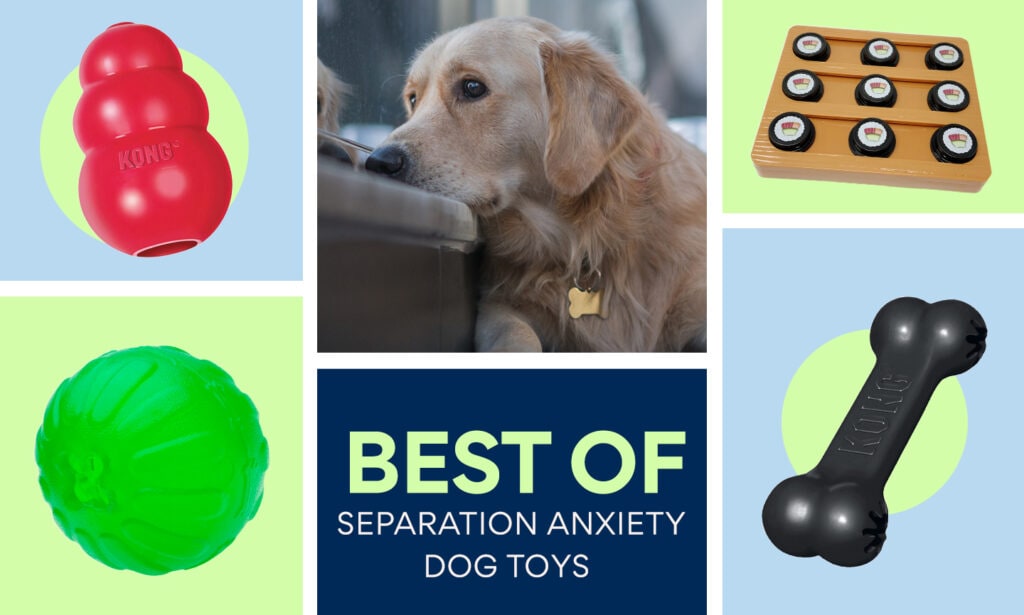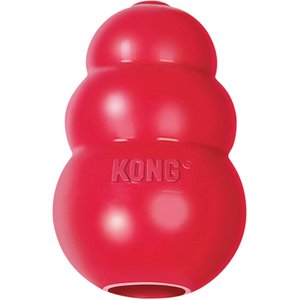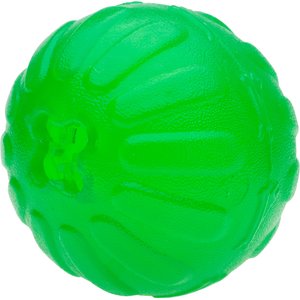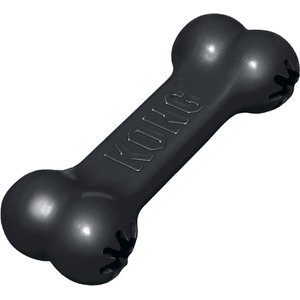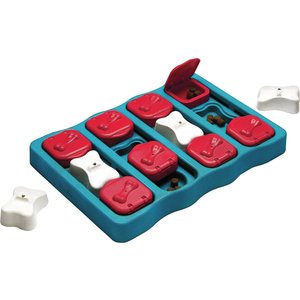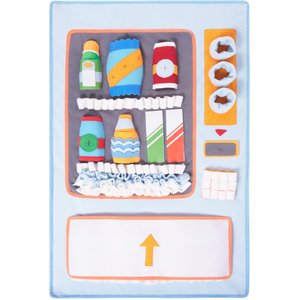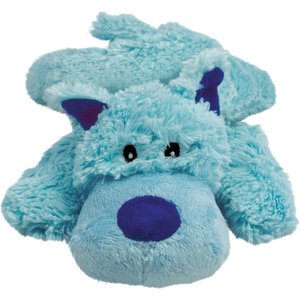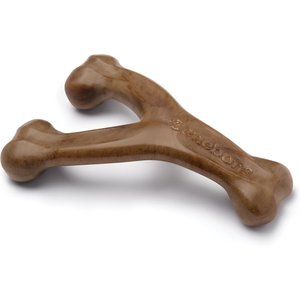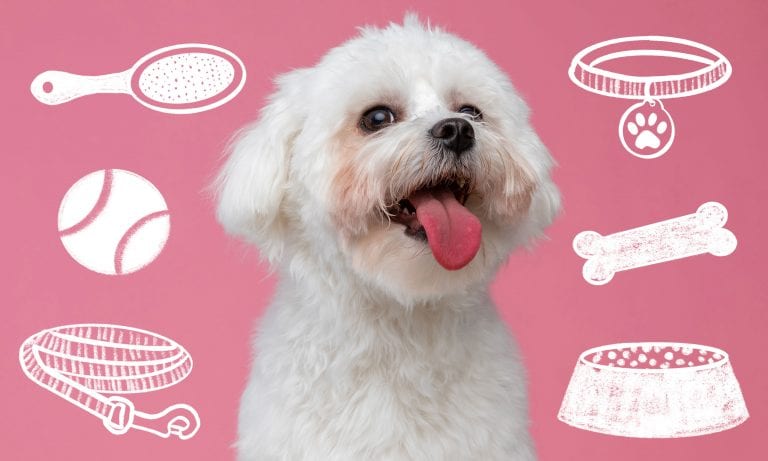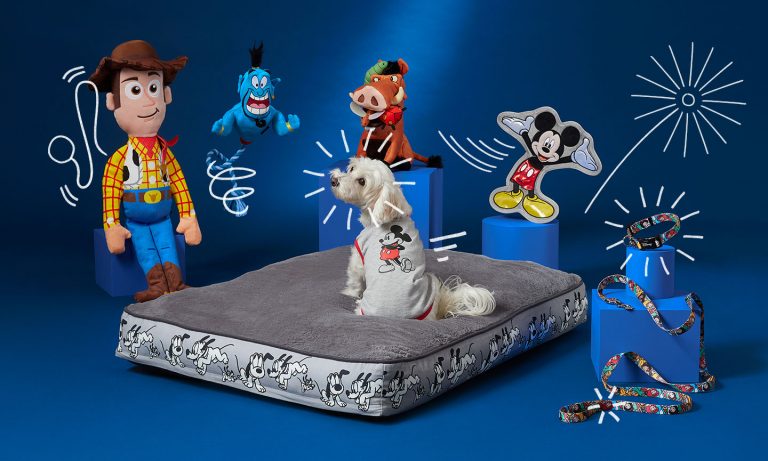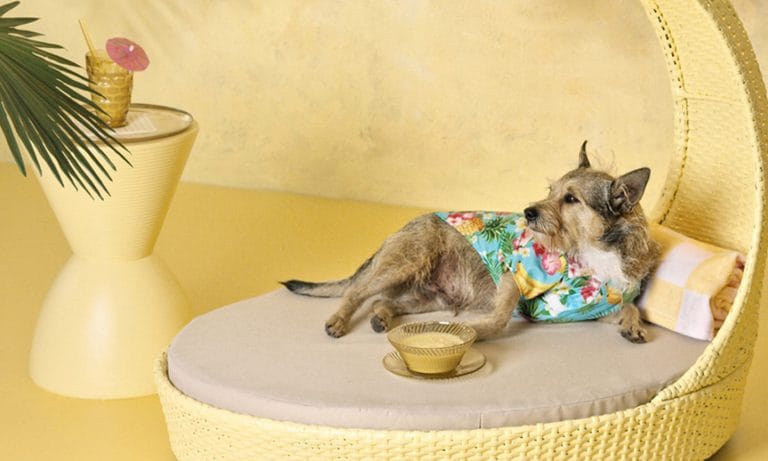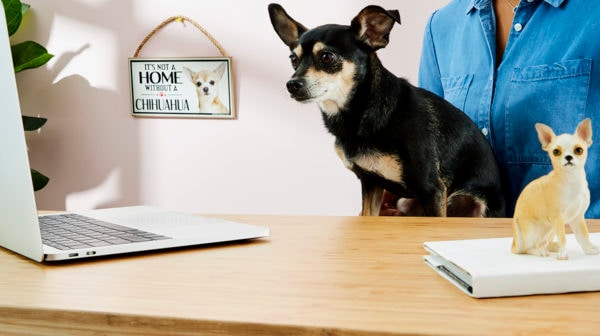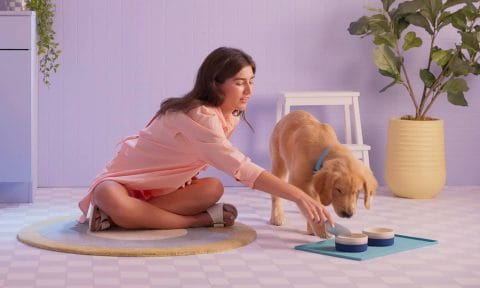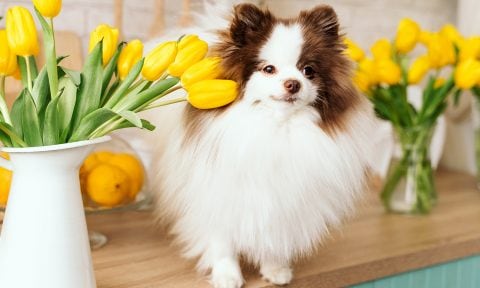If your dog gets stressed out when you’re apart, one way you can help them out is with separation anxiety dog toys. From soothing softies for snuggling to puzzles and games that keep their brain enagaged, dog toys for separation anxiety can help your pooch feel more relaxed while you’re away. To get you started, we’ve rounded up some of the best dog toys for separation anxiety as tried and tested by Chewy pet parents like you. These top-rated, best-selling toys for dogs with separation anxiety are specially designed to help anxious pups cope better with time away from their favorite humans.
Just remember, always consult with your veterinarian or a qualified behaviorist as well—dog toys for separation anxiety are one tool to help with separation anxiety, but anxious dogs may need some medical help and dog training to work through their anxiety.
- 1
- 2
- 3
- 4
-
5
Best Dog Behavioral AidSnuggle Puppy Original Snuggle Puppy Plush Dog Behavioral Aid Anxiety Relief $40 on Chewy
Best Overall Dog Toy
-
My dog is picky but loves his kong
My dog is picky and doesn’t like all toys however, he has really gotten a lot out of the kong and it is a perfect size for him! He loves knocking it around to get kibble out and carries it to and fro with pride.
-
The color!
My Chion will not eat kibble out of anything except a Kong. So I have a black one and got the red one so I always have one while washing the other.
-
Perfect for a heavy chewer
My dog loves his KONG toy, chases it until we get tired (he's never tired), and then he carries it around with him wherever he goes. Make sure to buy the right size, we purchased the Large and needed the xx-Large.
Best Treat-Dispensing Dog Toy
-
Dogs love these
I don't even put treats in these balls. They just love to play with them and they don't chew them up. All other balls I've bought tehy chew them. These last for couple years.
-
Good quality, keeps my dog engaged
My dog is eager to roll this ball around to get the bits of kibble. She enjoys challenges like this and it keeps her engaged for a while.
-
My high maintenance dog has finally met his match!
My pup is the most needy creature on this planet. He refuses to play on his own and is incredibly difficult to play with due to mobility issues and his picky play style. We do a LOT to keep him busy and engaged, but he still ends up just whining and staring at us until we interact with him again. This is the and only first toy in his six years that can keep him busy and engaged independently and it feels like a major breakthrough. I stuck a few pieces of his favorite treat in the ball and he played with it for over an HOUR before he had to take a rest from it! I am so excited to have an entertainment option that doesn’t require my...
Best for Extreme Chewers
-
Durable chew toy
This bone has held up pretty well for my Bernedoodle puppy that is definitely an extreme chewer. It has taken a a few weeks but she has now managed to chew off a chunk. It has held up better than anything else I’ve bought for her and I will replace it soon since she really enjoys it.
-
German Shepherd tested!
I have 3 shepherds and they tug,chew, and play with these all the time. The first "toy" that they couldn't destroy. It's about time! So we bought a lot. Some in the yard to play with and some all over the house!
-
Quickness of delivery
Dog loves it. Especially with spray cheese in it. We use it for throwing and tug of war, or just quiet chewing time alone.
Best Puzzle Toy
-
My cat loves this
My cat figured this out in no time and I use it frequently. He has other food toys, but this is a favorite. I recently bought another as a gift.
-
Our favorite puzzle for 2 years!!
Our senior Aussie Cattle dog has retired from working life, but he still needs mental stimulation to manage his anxiety and boredom. This was the first puzzle we got him and it’s still his favorite!! It only takes him about 5-7 minutes to solve these days, but it’s fun to watch and easy to clean and put back together. The puzzle is durable and withstands chewing and yanking off the attached pieces. It also has some weight so the puzzle doesnt slide all over the floor, and it’s fairly quiet so he can do it during my work Zoom meetings. We’ve had the puzzle for 2 years now. Quite simply the best puzzle out there!
-
Fun for a puppy
This game made my puppy think. He loves figuring it out. It is well made and you can use as many places to hide treats as you want.
Best Dog Behavioral Aid
-
Helped my new puppy sleep through the night
My puppy did not like sleeping in his crate the first several days. I bought the snuggle puppy and as soon as it arrived I tried it that night. I just turn the Heartbeat on and put it in the crate with my new puppy. It has worked wonderfully. Now he only barks at night if he needs to go outside and potty. I am loving being able to sleep at night again.
-
Dog in love with plush toy
My 1 year old beagle mix loves this plushie. He carries it around and sleeps with it. I needed something to help with his anxiety and this definitely helped.
-
Snuggle puppy helps my 5 year old dog.
The snuggle puppy has helped my sweet dog settle during rain and storms. For it to help her warms my heart!! Great product!!
Best Snuffle Mat for Dogs
-
My small 16 pound dog Loves this
Not sure why people complain. It’s too large. You just fold it up and tuck it away and it has so many fun options for the dog to search through. My very small dog just loves it.
-
Awesome Sniffle Mat!!!
This mat is by far the best sniffle mat I have come across. It’s super big and it will accommodate my 3 to 4 dogs once without any fighting. Lol plenty of room and lots of hiding places. I highly recommend. Worth every penny.
-
Super cute well made
Love the concept of it being a vending machine for treats suctioned it to my slider that the dogs go in & out of weeks ago & it’s still up
Best Plush Dog Toy
-
Teddy’s favorite
My puppy loves this toy. He can be rough on plushy toys and does not like the stiff, non destructible toys. This bear is soft and cuddly yet remains like new after being roughed up by a teething puppy.
-
Holds up good
This toy is so cute our golden amie loves it. She's a heavy chewer and so far it's holding up well
-
We have a few of these, love them
and our more sensitive (rescue) dog loves them. She needs a little emotional support toy sometimes and carries them around like babies when she is feeling nervous about something, like someone new at the door, or new noises.
Best Long-Lasting Chew
-
Stands up to intense chewing
Our Labradoodle loves the wishbone. It is easy for him to hold by himself and the bone lasts for a long time before he wears it down too mcuh.
-
My super chewers love these!
My dogs are both super chewers and I’ve been buying whole (not split) elk antlers for them for a few years. I got a coupon for one of my dog’s birthday and combined it with a great sale to try these Benebones. Both of my dogs took to these right away and they chew them often every day. So far so good! Will take them away when they’re too worn and get some replacements.
-
It must be tasty!
This wishbone chew is Sadie's go-to "toy". Cute soft toys are, sadly, demolished in seconds, but the wishbone lasts and lasts.
What are the signs of separation anxiety in dogs?
Signs of separation anxiety in dogs that you should be on the lookout for, according to Dr. Jennifer Summerfield, DVM CPDT-KA, a veterinarian and professional dog trainer:
- Potty accidents that only happen when you aren’t home
- Destructive behaviors like chewing on things or pawing at walls or doors
- Reports from neighbors that your dog is barking, whining, howling or making other noises while you’re away
- Treats or food that aren’t eaten while you’re gone—that your dog may then eat right away when you get home
- Excessive drooling when you’re gone
- Pacing or restlessness
If you’re concerned that your dog may have separation anxiety, Dr. Summerfield recommends using a dog camera to watch or record what your dog is doing while you’re gone. She says recording your dog’s actual behavior rather than relying on whatever circumstantial evidence you find when you get home can help distinguish between a pup with true separation anxiety and a dog who might just be bored and destructive.
How do toys help with separation anxiety in dogs?
Certain dog toys, like those you stuff with treats, can be helpful for many dogs with separation anxiety issues because they “help keep the dog happily occupied for a while, and also start teaching them that staying home alone isn’t such a bad deal since that’s when the really good stuff comes out,” Dr. Summerfield explains.
She often recommends some sort of extra-special, long-lasting treat like a stuffed KONG or Twist’nTreat filled with peanut butter, spray cheese or canned dog food whenever they leave the house. Freezing these types of toys after stuffing them helps them last longer.
Be aware, though, that many dogs will initially be too anxious to have any interest in toys or treats while they’re home alone. In these cases, Dr. Summerfield says anti-anxiety medication from your veterinarian can make a big difference, so she always recommends getting your dog’s veterinarian involved as part of the process.
Tips for Introducing a New Dog Toy for Separation Anxiety
You should always supervise your dog when giving them a new separation anxiety toy. Start by giving your dog their new toy while supervised, then take short trips away to get them used to the idea of you being gone.
Keep in mind that different types of separation anxiety toys will be better for certain pups—snuggle bugs who aren’t big chewers may love a soft plushy or easy lick mat while frisky pooches with lots of energy to burn may need a more challenging puzzle game or durable chew toy.
What are other ways to help separation anxiety in dogs?
1. Talk to your veterinarian about medication for separation anxiety.
According to Dr. Summerfield, medication is one way that you can really help your dog work through their separation anxiety. “Separation anxiety is one behavioral issue that’s really, really hard to make progress on without some anti-anxiety meds on board, since your dog is essentially having a panic attack every time you leave the house,” she says.
When your pup is super upset because of a stressful situation, they’re not able to learn new or better behaviors, so Dr. Summerfield says she often finds medication is a helpful part of the initial treatment plan to help make headway on changing their feelings. Pet parents can consult with their veterinarian or set up a consultation with a veterinary behaviorist to talk through the different options available, and help you decide if medication would be a good idea for your dog.
2. Keep comings and goings as calm and low-key as possible.
Don’t make a big production of saying goodbye to your dog or make a huge fuss over them as soon as you get home. According to Dr. Summerfield, “That just highlights the contrast between how fun and awesome it is when you’re home, and how quiet and lonely the house is when you’re gone.” Instead, keep calm when leaving or returning home to help your dog get used to the idea that this is a normal, everyday activity.
3. Don’t punish or scold your pup for potty accidents or destructive behavior.
“Dogs are very literal—they live in the moment and don’t understand the concept of being scolded for something that happened hours, or even minutes, ago,” says Dr. Summerfield. Additionally, if your dog learns that you’re upset with them when you get home, this can increase your pet’s anxiety and make them feel more concerned about the whole situation. Instead, practice rewarding calm behavior and set up a training schedule to help work through the events that trigger your dog’s anxiety—like the sound of your car keys or the sight of you putting on your jacket.
4. Create a safe zone for your dog to relax when you’re away.
Dr. Summerfield says that in her experience, most dogs with separation anxiety do better with less confinement. “If you can safely leave your dog loose in the house or even in a gated off portion of the house, this is often a better option than crating,” she says. Set up their safe space with a comfy bed, fresh water and their favorite calming dog toys. Start with short trial runs, with a camera set up so you can see what your dog is doing. If they start to become destructive or get into trouble, you can come back and help positively redirect their behavior. Practice short absences first and slowly build up to longer times away from your dog.
Looking for other ways to help you anxious pup in addition to the best separation anxiety dog toys? Check out our comprehensive guide on separation anxiety in dogs for more tips and pointers on how to help your dog stress less and relax more—even when you’re not at home.
Learn more about how your best bud can keep calm and tail wag on:
Share:
